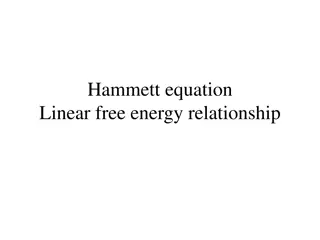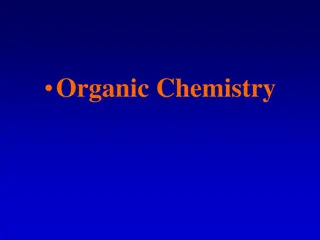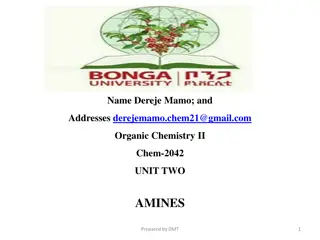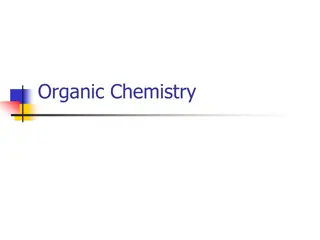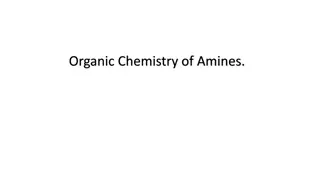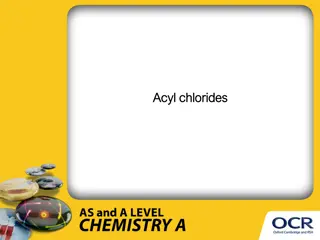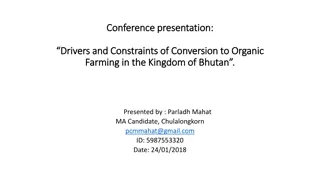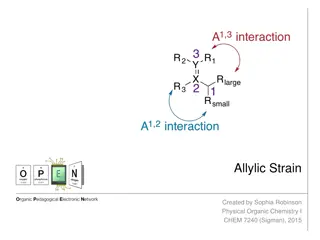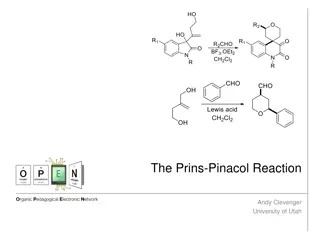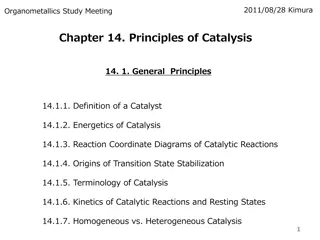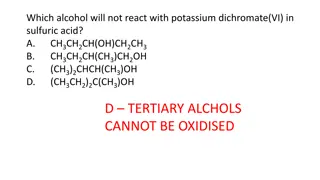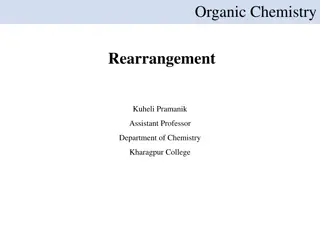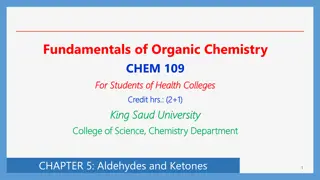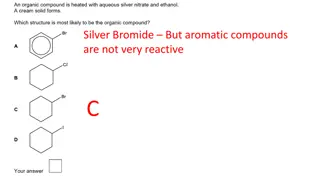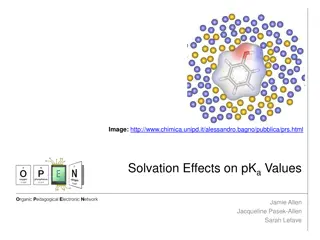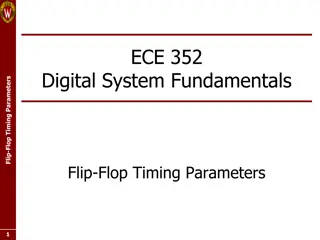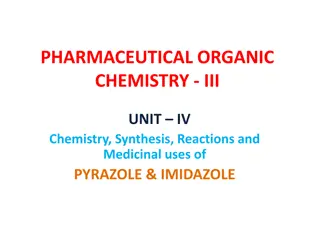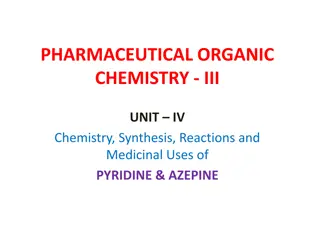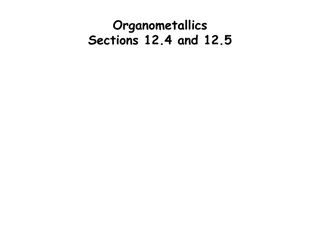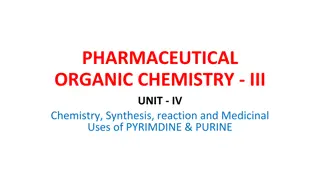Understanding Hammett Parameters in Organic Chemistry
The Hammett Parameters analysis, particularly the Hammett Plot, is a valuable tool in studying the electronic effects of substituents on aromatic systems. This linear free-energy relationship approach aids in optimizing reaction conditions and probing reaction mechanisms. Applications of Hammett Parameters reveal mechanistic changes based on substituents' electron-donating or withdrawing nature. Through Hammett Plots, insights into reaction pathways can be gained, guiding researchers in predicting and understanding reactions.
Download Presentation

Please find below an Image/Link to download the presentation.
The content on the website is provided AS IS for your information and personal use only. It may not be sold, licensed, or shared on other websites without obtaining consent from the author. Download presentation by click this link. If you encounter any issues during the download, it is possible that the publisher has removed the file from their server.
E N D
Presentation Transcript
Hammett Parameters Organic Pedagogical Electronic Network Eric Amerling & Christine Nervig University of Utah
Theory and Development of Hammett Parameters Overview: The Hammett Plot is a type of Linear Free-Energy Relationship (LFER) analysis designed to model the electronic effect of substituents on aromatic systems (in the para and meta positions only). Information gathered can be used to probe the mechanism of the reaction and can be applied in the optimization of reaction conditions. Derivation of values Ionization reaction used to probe effects of substituent on acidity O O keq H2O H3O OH O X X Acidity and values Deriving OMe CH3 4.36 H Cl NO2 3.44 X pKa s 4.47 4.2 3.99 -0.27 -0.17 0 0.23 0.71 electron- donating electron- withdrawing Wiki Page: http://en.wikipedia.org/wiki/Hammett_equation Other References: Hammett, L. P. Chem. Rev. 1935, 17, 125-136. Hammett, L. P. J. Am. Chem. Soc. 1937, 59, 96-103.
Theory and Development of Hammett Parameters Overview: The Hammett Plot is a type of Linear Free-Energy Relationship (LFER) analysis designed to model the electronic effect of substituents on aromatic systems (in the para and meta positions only). Information gathered can be used to probe the mechanism of the reaction and can be applied in the optimization of reaction conditions. Relationship of to new reactions Consider similar reaction: OH keq O H2O H3O O O X X Using previously derived values write: is a correction factor to compare a new reaction to the original Magnitude and slope of gives mechanistic insight Wiki Page: http://en.wikipedia.org/wiki/Hammett_equation Other References: Hammett, L. P. Chem. Rev. 1935, 17, 125-136. Hammett, L. P. J. Am. Chem. Soc. 1937, 59, 96-103.
Applications of Hammett Parameters Split Hammett plots reveal a changing mechanism due to the electron donating/withdrawing nature of the substituent (X). As seen in the differing pathways, there is a mechanistic change occurring depending on whether X is a EDG (pathway A) or EWG (pathway B). When the p-thioanisole has a EWG attached, the electron density being pulled away from the S-O bonding location, activating it for faster bonding which is seen by the Hammett Plot. References: Neu, H. M.; Yang, T.; Baglia, R. A.; Yosca, T. H.; Green, M. T.; Quesne, M. G.; de Visser, S. P.; Goldberg, D. P. J. Am. Chem. Soc. 2014, 136, 13845-13852
Problems 1. Two proposed mechanistic pathways leading to N H activation are shown below. Two Hammett Plots were produced by reacting DAC or NHC with para-substituted aniline. Discuss in the para and - plots. Which mechanistic pathway is more likely for the DAC reaction shown? Pathway A: Nucleophilic Carbene Ar Ar H N d- N H H H Mes Mes d+ N N Mes Mes N N O O O O H NHAr DAC Mes Mes N N Pathway B: Electrophilic Carbene O O Ar H H Ar N H N d+ H Mes Mes Mes Mes d- N N N N Mes Mes N N O O NHC O O DAC References: Moerdyk, J. P.; Blake, G. A.; Chase, D. T.; Bielawski, C. W. J. Am. Chem. Soc. 2013, 135, 18798-18801.
Problems 2. The Hammett study performed below was fit to -, +, and ; had the best correlation. Provide insight as to what this means. The slope of the plot was found to be 1.4, a positive correlation. Explain the value. (Hint: Consider the transition state). R R R Ln OCO2Et Pd(0) Ln transmetallation Pd d+ d- Pd fast Pd d- Ln F Si(OEt)3 References: Shukla, K.; DeShong, P. J. Org. Chem. 2008, 73, 6283-6291
Solutions 1. In plot A, the slope of indicates that electron donating substituents facilitate the reaction. Electron donating substituents on p-aniline would make the nitrogen more nucleophilic, indicating that DAC is acting as the electrophile and the reaction is undergoing an electrophilic activation mechanism (Pathway B). In plot B, the slope of indicates that electron withdrawing groups facilitate the reaction, making the nitrogen of aniline more electrophilic. Thus, NHC is likely acting as a nucleophilic carbene in the reaction pathway (similar to Pathway A). Note that for Plot B, - parameters are graphed, indicating that a partial negative charge on the aniline nitrogen is stabilized by resonance during the reaction. 2. In order for the Hammett plot to correlate well with +/- there must be some charge resonance involved, because the plot correlated the best, there is little/no charge resonance at the transition state. The trend seen with EDG slowing the reaction and EWD accelerating the reaction would result in a positive value. This is confirmed by the electron density in the transition state with a positive Pd attacking the slightly negative aromatic ring which would mean that a EDG would make that negative point even more negative.
Contributed by: Eric Amerling & Christine Nervig (Undergraduates) University of Utah, 2013 This work is licensed under a Creative Commons Attribution- ShareAlike 4.0 International License.



